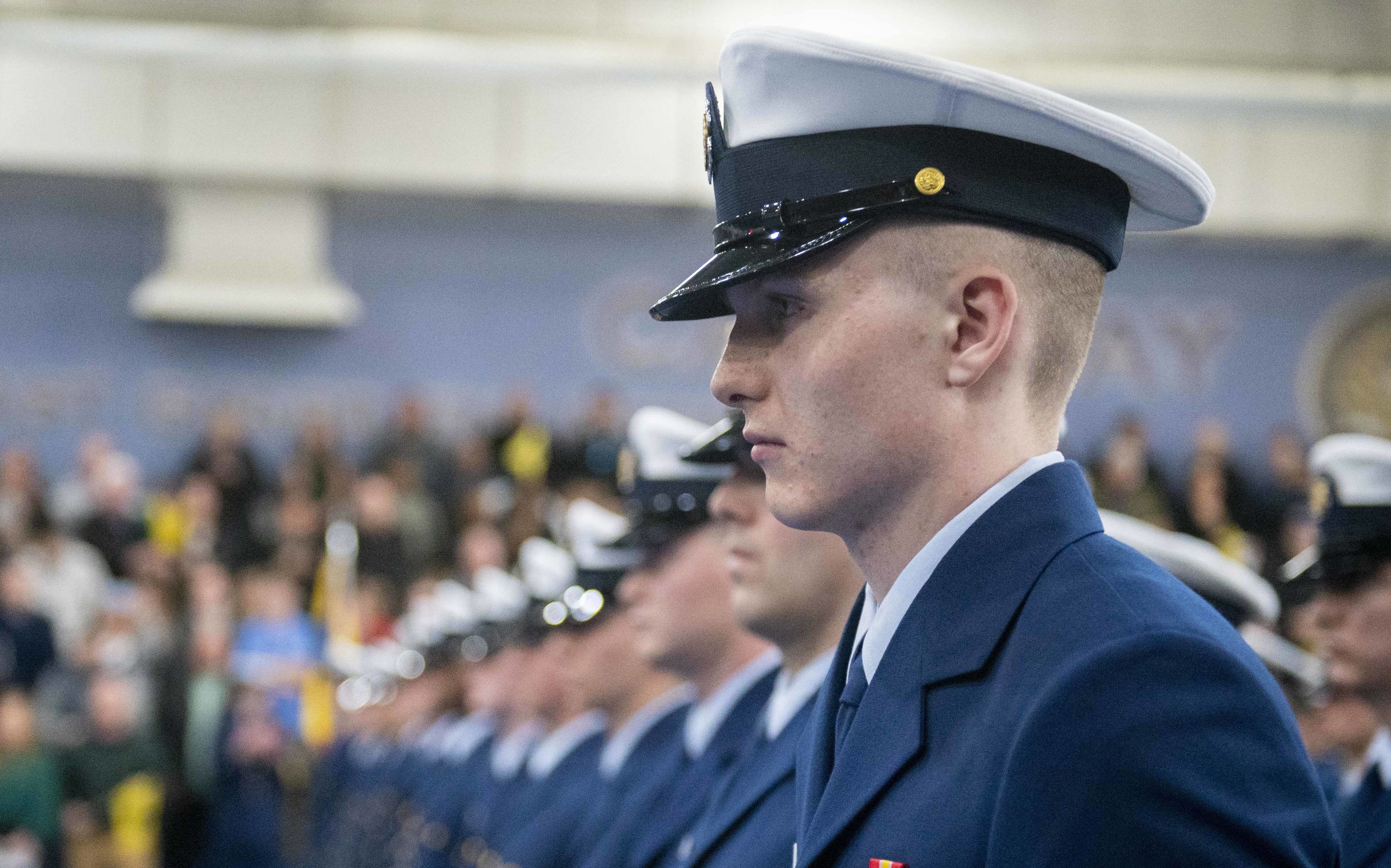
NATIONAL HARBOR, Md. — A comprehensive talent realignment initiative that sought to address personnel shortages in the Coast Guard saved about 1,500 billets, a top personnel officer said.
The Coast Guard was short 2,500 billets, Rear Adm. Russell Dash, commander of the personnel service center, told the audience last week at Sea Air Space 2024.
A lack of personnel, stemming from recruiting challenges, is one of the more immediate crises facing the sea service. Dash also leads the incident management team created to focus on recruiting.
The Coast Guard is focusing on three lines of effort for recruiting, which include trying to raise awareness and interest in serving and making the process easier.
Currently, any potential recruit is handed a clipboard with 82 pages in order to enlist, Dash said. Instead, the service is working on a a mobile app.
The Coast Guard is trying to be innovative with its approach to recruiting, Dash said, as it competes with the other services and industries for the same population. That means each service needs to find a way to attract candidates, even when fighting against companies like Starbucks that can offer $35 an hour for a shift manager.
And when one service takes an interesting approach, the other services often copy and paste it to their organizations.
One idea the Coast Guard is trying is using retirees to encourage people to enlist. Retirees who get someone to enlist are rewarded with a $1,000 check, Dash said. The service is also in the process of opening a junior reserve officer training corps program in each of the nine Coast Guard districts, he said.
Recruiting had never been an issue for the Coast Guard, Vice Adm. Paul Thomas, deputy commandant for mission support, said at separate Sea Air Space panel. People would come to the service, and they met the necessary numbers with little effort. Now, the service has to revamp its approach.
That means opening up new recruiting stations and billets, Thomas said. It also means the Coast Guard cannot be as picky with candidates. Before, the service could focus recruiting on minority groups to ensure a more diverse force. Now, with the recruiting shortages, the service must readjust its efforts to get as many new coasties as possible.
That does not mean the Coast Guard is lowering its standards, Thomas said. Instead, it’s opening more doors for potential candidates.
Beyond competition with the other services and industry, the Coast Guard is feeling the effects of high levels of distrust in the military. People actively discourage young Americans from enlisting, Thomas said.
Without the draft over the past 50 years, people have also lost a connection to someone who served, creating another problem for recruiters, Navy Chief of Personnel Vice Adm. Richard Cheeseman said during the same panel.
For the Navy, it takes 10 cold calls to get one person to start the enlistment process. For every seven people with mentors, one will enlist. One out of every five people with a mentor associated with the Navy will start the enlistment process, Cheeseman said.
The Coast Guard is also evaluating to retain coasties and their families, Dash said.
As part of the realignment efforts, the service looked at the traditional up or out model employed by most services and determined it no longer works for the Coast Guard, Dash said.
Instead, the service wants to allow people to stay in the service if they opt out of promotion, allowing it to keep the service members that the Coast Guard needs, while also giving more choice to the guardsmen.
Dash described it as going from a pyramid, where the top section was smaller due to the number of people who chose to get out after not getting promoted, to a pentagon, where the mid-levels are bulkier as more people stay in.





